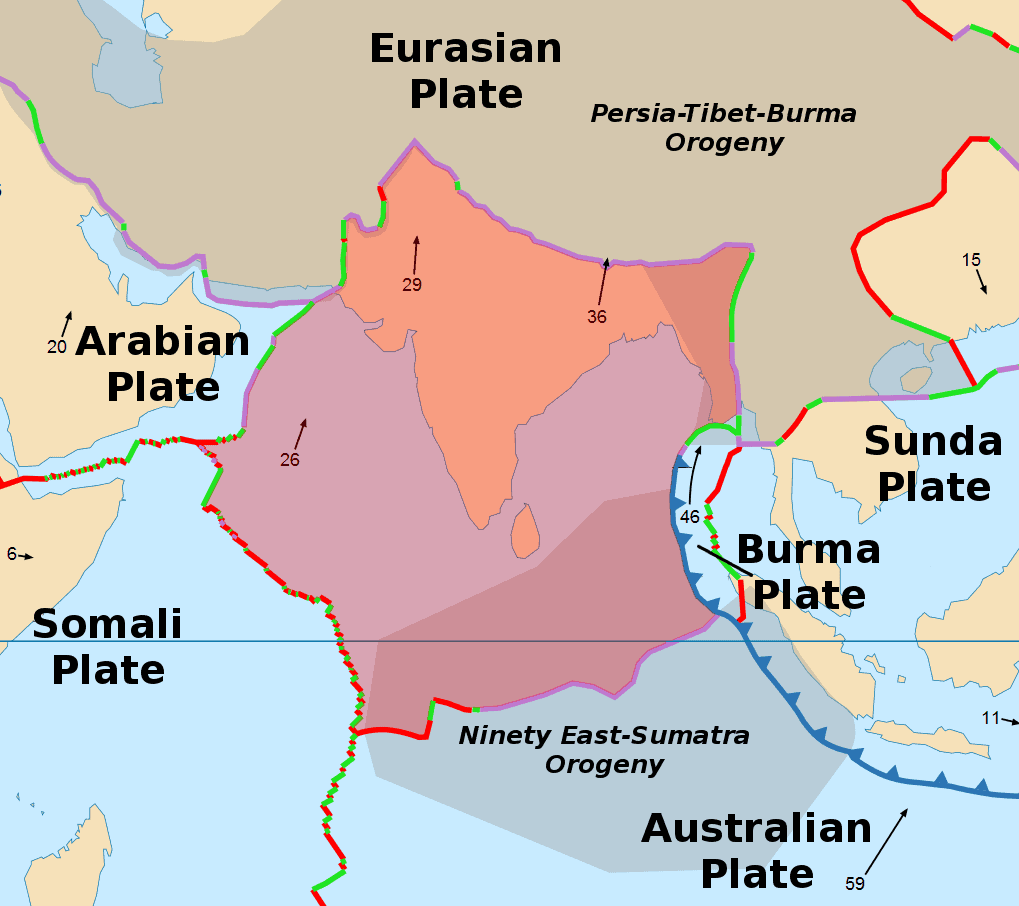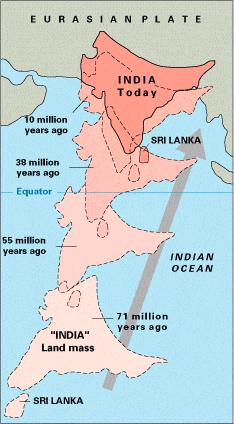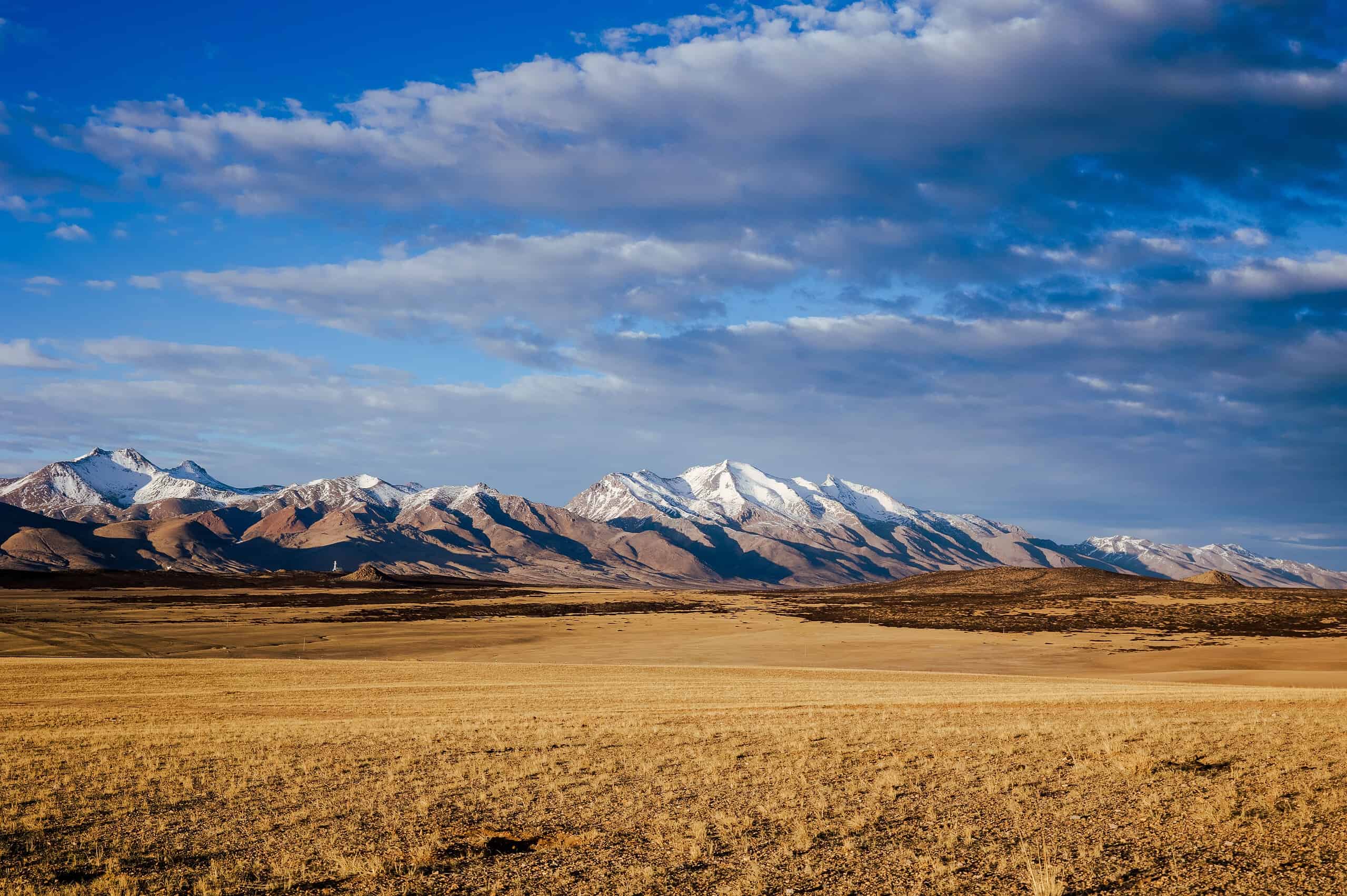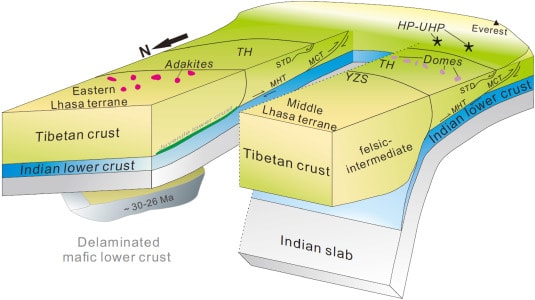The Himalayas are perhaps the most impressive landscape on Earth. They’re pristine, towering mountains that are seemingly untouchable. But that’s just on the surface. Underneath the Himalayas there’s lively and active geology that’s still cooking up new phenomena. According to a new analysis, one of these phenomena could be splitting up the Tibetan lithosphere.

India undertook the most impressive geological journey. Rewind to 100 million years ago, and the Indian subcontinent is essentially an island. But it’s moving — and it’s moving towards Asia. The movement is incredibly slow, at just a few centimeters per year. But even a few centimeters per year adds up over millions of years. This all starts to culminate 60 million years ago, when India started its movement to smash into the Eurasian tectonic plate.
This collision was something special. There are two main types of continental plates: oceanic ones (which are thinner and denser) and continental ones (which are thicker and less dense). When an oceanic and a continental plate collide, the oceanic slides beneath. But both India and Asia were continental plates so neither of them went under the other. Instead, they both went the only direction they could: up.

That’s what created the Himalayas, this gargantuan collision between two continental plates.
This process is still unfolding. The Himalayas are rising at around 1 cm per year — but what’s happening underneath?
If you ask Lin Liu and his colleagues, the answer is “a lot”. Liu presented their findings at the American Geophysical Union conference in San Francisco. The researchers used a seismic technique called S-wave receiver function to open a new window into his hidden realm.

The study utilized data from broadband seismic stations sprawled across southern Tibet, coupled with re-analyzed older data. Together, these provided an unprecedented view into the structure and behavior of the region’s lithosphere, the rigid outer layer of the Earth.
A key aspect to this investigation was the identification of the lithosphere-Asthenosphere Boundary (LAB), a critical layer where the rigid lithosphere gives way to the more ductile asthenosphere beneath.
By mapping the LAB’s depth and characteristics, researchers can infer a lot about tectonic processes. In this study, the team innovatively analyzed pulses in the seismic data that correspond to the LAB. This approach, differing from previous studies that often relied on subjective interpretations, allowed for a more objective mapping of this boundary.
The results were striking. They showed evidence of the Indian Plate not just pushing beneath the Tibetan Plateau but also tearing and warping in response to the colossal geological forces at play. The depth of the Indian plate varies significantly in different areas. In some regions, it extends as deep as 124 miles (200 kilometers), while in other locations, the base of the plate is found at a shallower depth of just 62 miles (100 kilometers), indicating that parts of it may have separated or peeled off.

In other words, in some regions, the deeper parts of Tibet are breaking apart. As surprising as it sounds, some geologists have long suggested that something like this could happen. As tectonic plates are massive structures composed of different layers, they may split along the interface between layers (a process called delamination). But this process was mostly suggested through computer models — this is the first time it might have been observed in this way in nature.
We say “might have” because as other researchers point out, while the evidence is intriguing, it’s not entirely conclusive. This is still only a snapshot and far more data is required to clearly show exactly what’s going on deep within the Earth.
However, this research not only advances our understanding of the complex geological processes shaping the Himalayas and the Tibetan Plateau but also provides a model for studying other collision zones around the world. It offers insight into the forces that have shaped our planet’s surface over millions of years. Researchers are peering into the depths of our planet — and finding important answers.
A pre-print copy of the study is available online.


